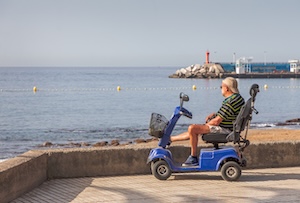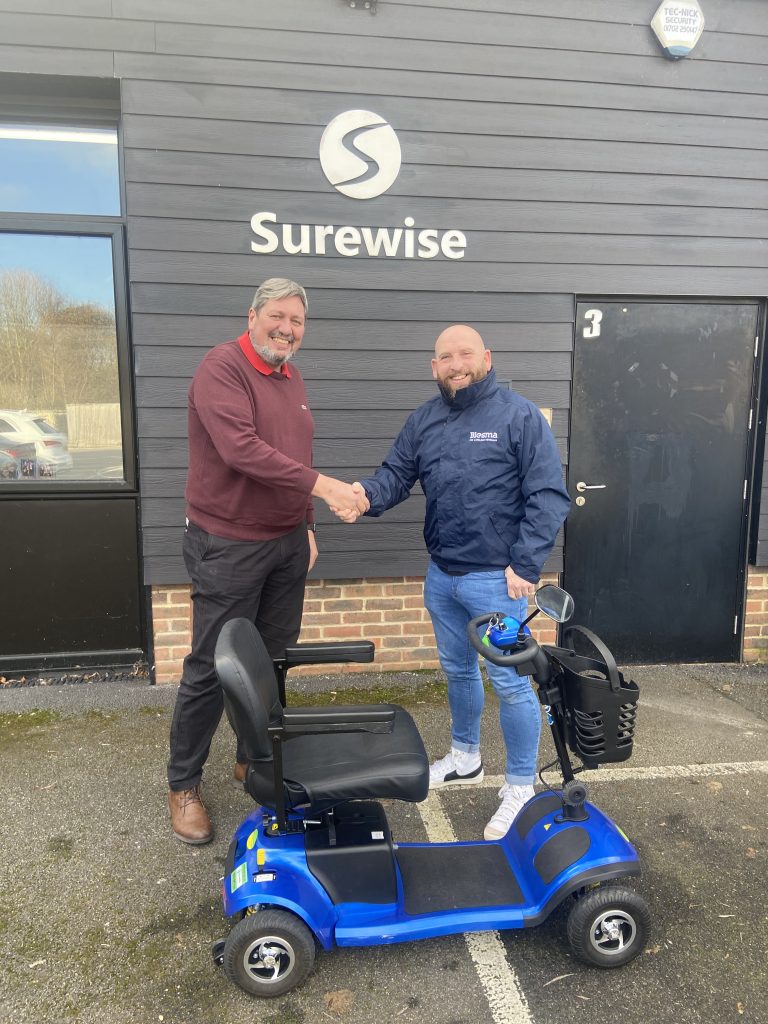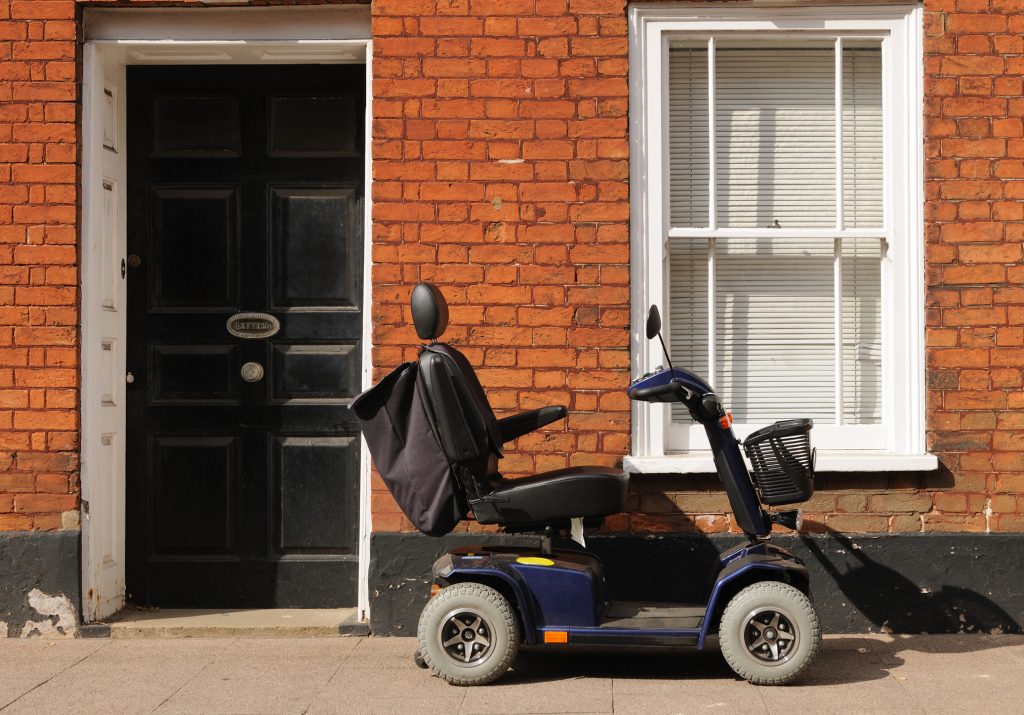What exercises can you do in a wheelchair or mobility scooter? Whether you’re a long-time wheelchair user or you’re new to using a mobility scooter, you’ve probably wondered, how do you stay active in a wheelchair or scooter?
Having mobility problems doesn’t mean that you can’t be active. In fact, being more active as a wheelchair or mobility scooter user can benefit your health and your daily life.
In this guide, we’ll talk about why you should exercise and stay active, and look at what exercises you can do in a wheelchair, as well as other ways you can stay active as a wheelchair or mobility scooter user.
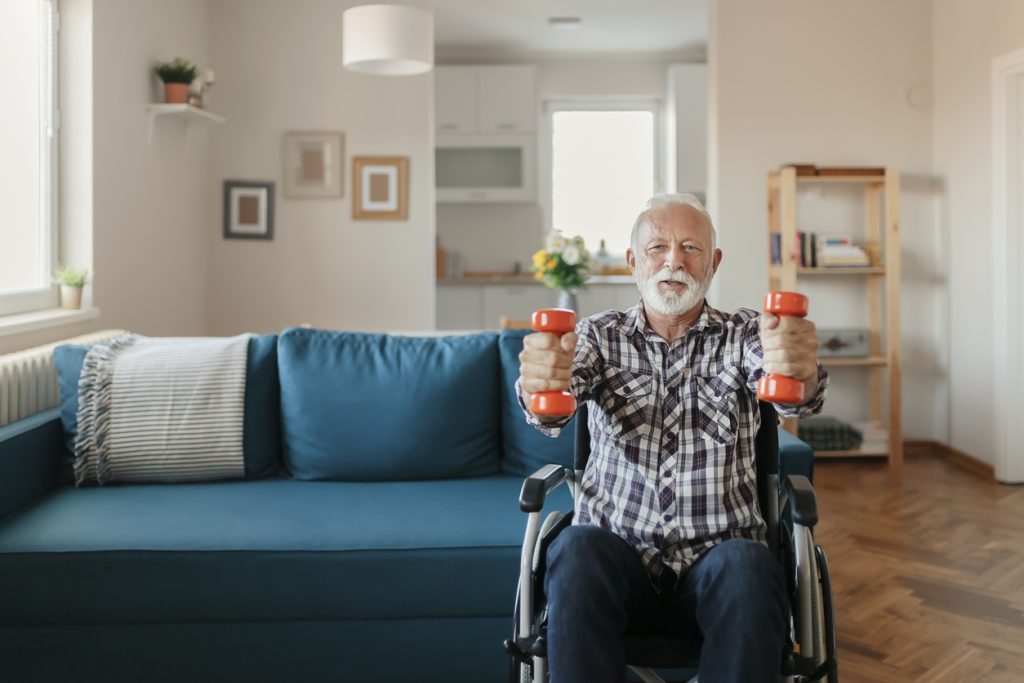
Why Exercise?
We all know that exercise is good for us. You might have been told by your healthcare team that you should stay active to improve your health. But how does exercise help?
Let’s look at some of the benefits in more detail.
Physical Health
Regular activity is great for everyone’s physical health, but it’s especially important for people who use wheelchairs or mobility scooters.
If you use a manual wheelchair, you’re at a higher risk of muscle strain and other injuries. Regular exercise can strengthen your muscles and help keep your body fit and able to help you manoeuvre.
But even if you use a powered wheelchair or mobility scooter, there are health benefits to staying active.
Doing regular exercise can reduce your risk of major illnesses and injuries, including:
- Coronary Heart Disease
- Stroke
- Type 2 Diabetes
- Osteoarthritis
- Certain types of cancer, including breast cancer in women and bowel cancer
- Dementia
Exercising regularly can also help you lose weight and lower your risk of falls and the associated injuries, such as hip fractures.
Mental Health
But exercise isn’t just good for your body – it’s good for your mind too. Physical exercise can have a wonderful effect on your mental health, reducing your risk of sleeping problems, depression, and stress.
It can also do wonders for your self-esteem and introduce you to new people and new hobbies.
If you’re already struggling with depression or anxiety, exercise can help. It doesn’t replace medical care, such as medication or talk therapy, but can be helpful in conjunction with your current treatment plans.w hobbies – all of which are so important if your mobility problems isolate you from society at some point.
What Exercise Can I Do?
So now we know the benefits of staying active, let’s look at what exercises you can do in a wheelchair.
Whatever physical ability you have, there are always activities you can do. Whether they’re exercises originally designed for wheelchair users, or modifications for people with limited mobility, there are lots of options for staying active.
Remember, exercise doesn’t have to mean going to a gym, pool or fitness classes – stay within your abilities and find something that you enjoy.
Here are some ways you can stay active as a wheelchair user:
- Swimming
- Seated workouts at home
- Attending wheelchair fitness classes in person
- Wheelchair sprinting or cycling
- Using specialised gym equipment
- Team sports
In many cases, wheelchair exercises are a great idea. However, if you or the person you support has complex health conditions, or is recovering from an illness or injury, please talk to your healthcare team before starting new physical activities.
1. Swimming
It’s not an exercise you can do while in your wheelchair or mobility scooter, but swimming is a great way to keep fit for many wheelchair users. For people with limited mobility, the water can provide a feeling of freedom, and it can help strengthen your muscles, as well as offering a good cardiovascular workout.
You may choose to go to the pool with a family member, friend, or carer, or join a swimming class or club.
Swimming pools should be accessible for wheelchair users, with wheelchair-friendly access routes. If you use an electric wheelchair, you might not be allowed to take it to the poolside, but your local pool may provide an alternative option.
Some pools may provide hoists or other ways to transfer into the water. Contact your local pool before going along for the first time if you have questions about how they could accommodate your access needs.

2. Seated workouts at home
There are thousands of seated workouts available online. Whether you want to do intensive cardio workouts to burn fat, or try stretching sessions, there will be exercise videos available.
If you’re following along with a seated workout video, make sure you’re watching it on a big screen such as a TV or large laptop, rather than a small phone screen.
To find appropriate workouts, search online for phrases like “wheelchair workout” or “seated workout”. Look at reviews and comments to decide which ones are best for you.
For people who prefer to work with an instructor, you may be able to join a Zoom or other online class, where the instructor can watch you and offer support when necessary.
If you’re doing workouts at home without an instructor, there’s no one there to correct your posture or form. Only move in ways that feel comfortable for you, and stop if you feel pain. Keep your phone or personal alarm near you if you’re worried about injuring yourself.
What exercises can you do in a wheelchair without a class?
- Bicep curls: Hold a weight, such as a small dumbbell or can of food, in each hand. Face your palms upwards, and have your forearms parallel with your legs. Bend one arm at the elbow, so that your hand and the weight come up towards your shoulder. Repeat with the other arm.
- Tricep dips: Place your hands on your armrests, and slowly push yourself upwards until your arms are straight. Hold yourself there for a few seconds, then slowly lower yourself down.
- Side twists: Sitting up straight, slowly turn your body to the left. Hold the position for a few seconds, then turn to the right. Repeat this a few times.
- Knee lifts: Start with your feet on the ground or your footrests. Lift your knee, and hold it in that position for a few seconds, before lowering it. Repeat with the other leg. You can try to raise your knees higher each time.
- Hamstring stretches: Extend your legs in front of you, and slowly lean forward at your hips. Hold the stretch for a few seconds.
- Hip flexor stretches: Sit up straight and cross one ankle over the opposite knee. Press on your raised knee until you feel your hip stretch. Hold for 30 seconds, then repeat on the other side.
If you’re sitting in your wheelchair for these exercises, remember to put the brakes on.
3. Attending wheelchair fitness classes in person
Your local leisure centre, community centre, or gym may offer in-person wheelchair fitness classes. Look at their websites, community noticeboards, or social media pages to find more information.
If there is a care home, day centre or assisted living scheme near you, they may also offer fitness classes for people in the local community.
Some wheelchair fitness classes might include:
- Wheelchair yoga
- Tai chi
- Otago or other balance and falls reduction classes
- Wheelchair boxing
- Wheelchair dance
4. Wheelchair sprinting or cycling
For people who want to do more intense sport, wheelchair sprinting or cycling might be an option.
You could exercise alone, or join a club to race others. Look online for wheelchair racing or cycling groups near you, or ask at your local gym or cycling shop.
To get the best results, you will need specialised equipment, such as a racing wheelchair, recumbent cycle, or handcycle.
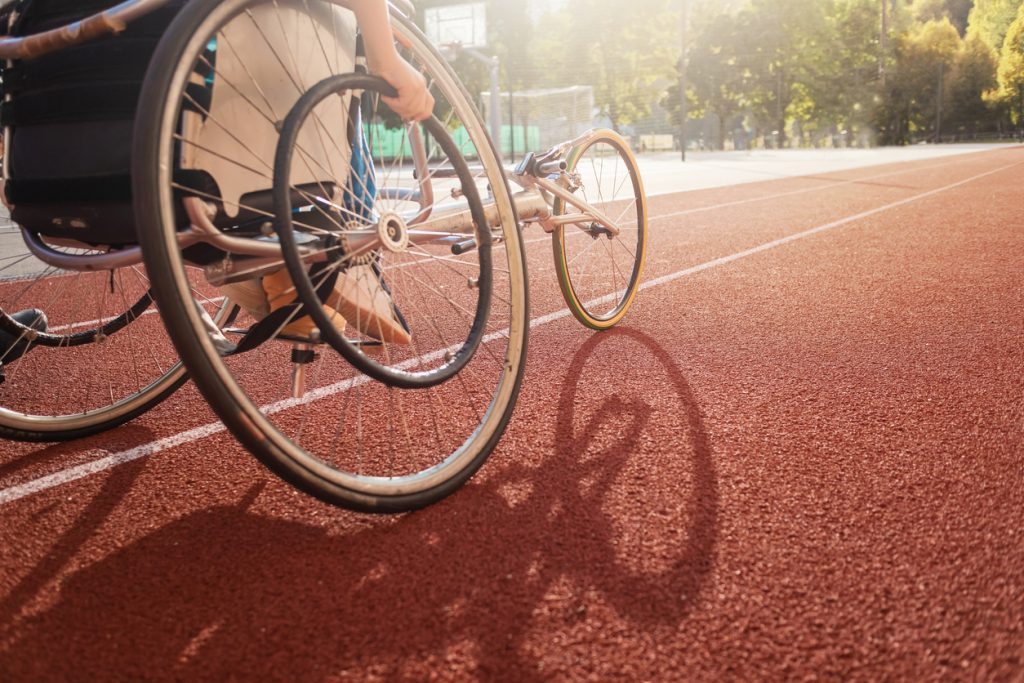
5. Using specialised gym equipment
Some gym equipment is specifically designed for wheelchair users. Your local gym may have some appropriate equipment, such as:
- Specialised rowing machines
- Specialised cycles
- Handbikes
Alternatively, you may be able to use some standard gym equipment, such as weights, ropes, and resistance bands.
Talk to your gym about how they can accommodate your needs. If there is a care home, day centre or large assisted living scheme near you, they may have a gym that’s open to the public.
6. Team sports
You might want to spend time with others as well as keeping active. Wheelchair team sports can be a great way to meet both of these goals.
There are lots of team sports out there, although what is available in your area might vary. Some popular wheelchair team sports include:
- Basketball
- Boccia
- Bowls
- Curling
- Football
- Table tennis
- Tennis
- Volleyball
How Do You Stay Active in a Wheelchair?
Remember, exercise doesn’t have to mean going to the gym or doing specialised fitness activities. For lots of wheelchair or mobility scooter users, there are small changes you can make to improve your activity levels.
Any activity counts, as long as it:
- Raises your heart rate
- Makes you breathe faster
- Makes you feel warmer
Some ways to stay active might include pushing your own wheelchair, or doing housework or gardening. Some video games involve movement and can be played with the whole family.
If you want to do specific exercises but don’t want to join a gym or follow a fitness class, you could plan them into your day – perhaps do some stretching while watching TV, or lift weights while talking on the phone.
How Much Exercise Should I Do?
Adults should try to be active every day, and do at least 150 minutes of moderately intense activity each week.
Moderately intense activity means that you can still hold a conversation, but wouldn’t be able to sing.
If you’re working out even harder than that, it’s called vigorous intensity activity, and you might need to pause for breath while talking. This is also great for your health, if you can manage it.
Remember to talk to your healthcare team if you have a complex medical condition or are recovering from an illness or injury. Doing intense exercise might not be good for you in certain circumstances.
If you are not used to exercising, you should aim for 10-minute sessions at first and slowly build up your physical ability before doing longer sessions.
Conclusion: Exercises for Wheelchair Users
Now you know what exercises you can do in a wheelchair or mobility scooter, it’s time to get started! Keeping fit can help to keep your body and mind healthy, and most wheelchair and scooter users can add more activity to their lives.
If you’re new to using a mobility scooter or wheelchair, remember to arrange comprehensive insurance. This can cover you for theft, damage, or accidents, so you can continue staying active.
Please note: You must check with your insurance provider if you are covered for sports in your wheelchair or mobility scooter.




